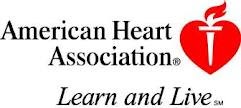Treating Arrhythmias in Children
Medications
Many rhythm disorders, especially tachycardias, respond to medications. Several drugs are now available and more are being developed. These drugs can't cure the arrhythmia, but they can improve symptoms. They do this by preventing the episodes from starting, decreasing the heart rate during the episode or shortening how long the episode lasts.
Sometimes it's hard to find the best medication for a child. Several drugs may need to be tried before the right one is found. Some children must take medication every day; others need medications only when they have a tachycardia episode. It's very important to take the medication as prescribed.
All medications have side effects, including drugs to treat arrhythmias. Most of the side effects aren't serious and disappear when the dose is changed or the medication is stopped. But some side effects are very serious. That's why some children are admitted to the hospital to begin the medication. If your child is prescribed medication, it's very important that your child take the medication just the way the doctor prescribes it.
It's often necessary to monitor how much of a drug is in your child's blood. The goal is to make sure there's enough of the drug to be effective, but not so much that harmful side effects occur. These blood tests require taking a small amount of blood from a vein or the finger. It's a good idea to talk to your child about this before the doctor visit.
Other treatments Radiofrequency ablation — Some tachycardias are life-threatening or significantly interfere with a child's normal activities. These problems may warrant more permanent treatment. One procedure, called radiofrequency catheter ablation, is done with several catheters in the heart. One is positioned right over the area that's causing the tachycardia. Then its tip is heated and that small area of the heart is altered so electrical current won't pass through the tissue.
Surgery — Sometimes surgery that interrupts the abnormal connection in the heart is required to permanently stop the tachycardia.
Artificial pacemaker — A variety of rhythm disorders can be controlled with an artificial pacemaker. Slow heart rates, such as heart block, are the most common reason to use a pacemaker. But new technology now lets doctors treat some fast heart rates with a pacemaker, too. An artificial pacemaker is a small device (1 to 2 ounces, 1.5 by 1.5 inches). It's put inside the body and connected to the heart with a thin wire. It works by sending small, painless amounts of electricity to the heart to make it beat.
Inserting a pacemaker is a simple operation. The wires are attached to the heart, and the pacemaker is placed in the abdomen (belly) or under the skin of the chest wall. Sometimes only one wire is attached to the heart. In other cases two wires are used. Many different models and brands of pacemakers exist. Some can sense when your child is active and increase the heart's beating to keep up with exercise.
If your child has a pacemaker, he or she will need regular checkups. It's important to check the pacemaker's battery and make sure the wires are working properly. Pacemaker batteries usually last for years, but the pacemaker will still need to be replaced periodically throughout the user's lifetime. Sometimes the wires also need to be replaced. Regular checkups can show if anything needs replacing.
Most children with pacemakers can engage in normal activities. Your doctor may advise against participating in some contact sports, however. Talk to your child's cardiologist about this.
Learn more about living with a pacemaker
Download a pacemaker ID card






















.png)












No hay comentarios:
Publicar un comentario